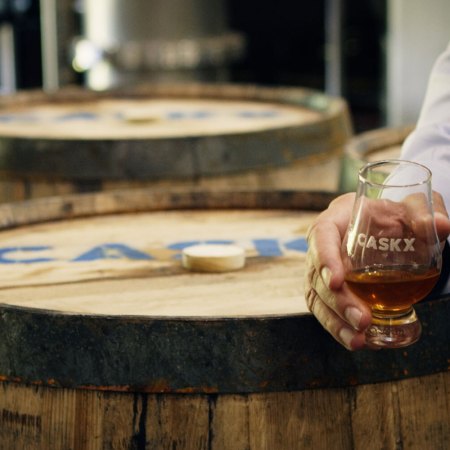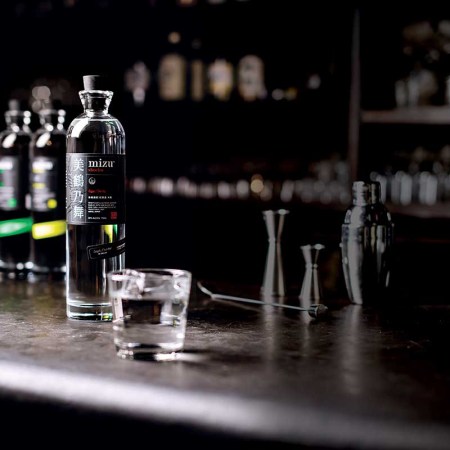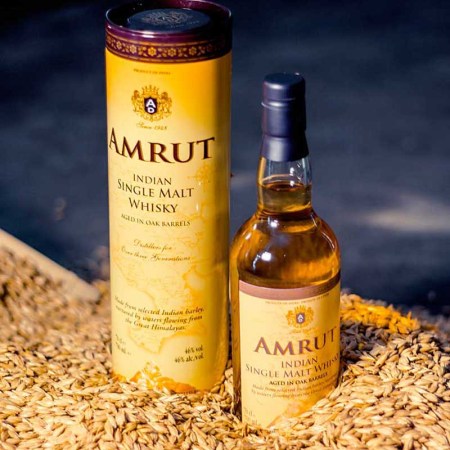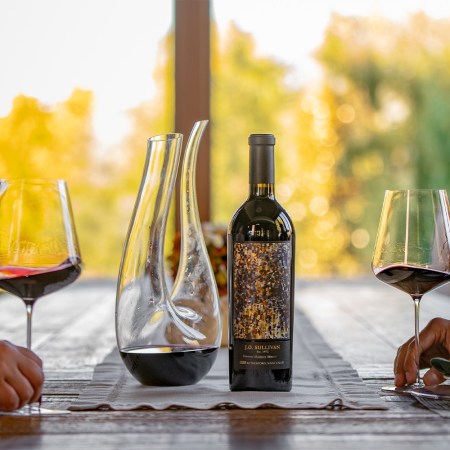Descending into Portugal’s Douro Valley is no small feat. The roads from Porto, the nearest city, are narrow, winding over steep hillsides overlooking the sparkling, azure Douro River. But it’s not until you arrive — and pour yourself a snifter of rich, fragrant port — that your journey really begins.
No one knows this better than the folks behind The Last Drop Distillers Limited, a U.K.-based company dedicated to tracking down, bottling and selling the world’s most rarefied spirits.
Founded by longtime industry vets Tom Jago and James Espy and currently run by their daughters, Rebecca Jago and Beanie Espy (along with director Ben Howkins), Last Drop’s mission is pretty simple: to sniff out, dress up and sell super old, super rare liquors, from Scotch to cognac and beyond.
“Tom’s expression is that we’re the antique dealers of the spirits world,” says Beanie. “Our job is to seek out some of the most unlikely places and dusty corners, romantic warehouses and totally unromantic warehouses — just the most interesting things we can. Our expertise lies in knowing what’s really worth buying and what isn’t.”
Even though it’s a marked departure from their previous 10-bottle lineup of blended whisky, single malt and cognac, the team’s latest pursuit — a pair of delicious Tawny ports hailing from a multigenerational Douro Valley producer and dating back to 1870 and 1970, respectively — undoubtedly fits that bill.
But how they did they get here?
The Hunt Begins
Last Drop launched in 2008, putting out 1,347 bottles of a 1960 blended Scotch and crossing their fingers that enthusiasts would jump at the opportunity to get their paws on one or two of these boozy white whales. And it worked. The team sold out of each release almost as quickly as it hit shelves, building a loyal fan base thirsty not only for the next vintage sip, but also for the story that comes along with it.
For the LD team, the hunt is half the fun.
“My daughter was at university in Edinburgh and we went up to see her and drove up to Glen Garioch, which is a really small distillery up in the Highlands,” remembers Rebecca Jago, recounting her favorite acquisition. “They had a cask with less than a third of the liquid left, a 1967 single malt. That was our first, and to date, only single malt. And it was really special because I found it myself and it’s completely different than the Glen Garioch today, which was taken over by Beam Suntory and they got rid of all the smoke, all the peat. It’s quite a sweet whisky now. We heard about it and called to verify — it was absolutely word of mouth.”
Quite a bit of hands-on work goes into nabbing this elusive stock, even when you’re only working with a fraction of a barrel.
“With the Glen Garioch, I tasted it straight from the cask,” Rebecca says. “Originally, this had been used to put into a blend but then just left, because once Glen Garioch changed their distilling style, they weren’t going to bottle this. We took some samples, and it was brilliant. But it was also tiny — just 118 bottles worldwide. And that’s the lovely thing about having such loyal customers: with anything under 400 bottles, we just tell them it’s there, and it’s gone.”
Thanks to their fathers’ unparalleled industry clout (between them, they’re credited for the birth of brands such as Johnnie Walker Blue Label, Chivas Regal 18 Year Old, Malibu and Baileys Irish Cream), plus their recent acquisition by major player Sazerac, Rebecca and Beanie aren’t exactly short on potetial distribution and marketing partners. But even that enormous edge doesn’t always guarantee a W.
“It’s an awful lot of who you know, who knows somebody, who knows somebody else, and that can lead you down a complete wild goose chase to a dead end,” admits Rebecca. “Once we were approached about a cask of a 1974 rum which had been brought over from Guyana in cask and matured in Scotland. It was just breathtakingly delicious and we got really excited, we were doing all the maths because this was not cheap, and it took quite a while to go through all the processing. Then we went back to the guy who had offered it and he said, ‘I think I need to get you a new sample,’ because it was a relatively old sample. Well, in the interim, the owner, who had six casks, had married the whole lot together. He sent us a new sample and while it was good, it was nothing like the original. Sometimes it works, sometimes it doesn’t.”
The one thing LD can ensure is the quality of their product. As Beanie tells it, a good narrative could never justify mediocre swill. Rebecca tells a story about a mysterious Frenchman who drove her and her father out into the middle of nowhere to reveal a picturesque padlocked barn teeming with Century-old cognac, but even that level of romance wasn’t enough to make up for the lackluster samples they toted back to England. With such little product to push — fewer than 5,000 Last Drop bottles have hit the market so far — it’s simply not worth the risk.
“We only do what we do,” says Beanie. “We don’t have an entry-level 12-year-old Scotch or a simple Ruby port or anything to tide us over.”
Port of Entry
For director Ben Howkins, a former port trader who literally wrote the book on the stuff, diving into the vast, underexplored world of port marks an especially exciting turn for the whisky-centric brand. He used his Bible-thick Rolodex to select the ideal Portuguese winery to partner with, landing on a highly respected Douro-based winery and port shipping company called Van Zellers & Co., established in 1780 and currently helmed by Cristiano van Zeller and his daughter Francisca.
What makes port so special — and tailor made for Last Drop — are the deep family ties embedded into each winery, or quinta: each generation passes their land, techniques, connections and, most importantly, product onto the next. When the recession hit in the mid-aughts, many of these port-making families cautiously decided to move some of their older stock in order to stay afloat. For buyers they trusted, this meant a veritable gold (er, ruby red) rush.
“This is very old family with whom we always had a connection,” says Van Zeller, detailing how he first came across his precious barrels. “Some years ago this friend of mine said, ‘I want to sell these wines.’ It actually happened that they had 1870 and 1970, so I went in making sure that the wines were alright, that they were kept correctly. We made this deal just before Ben and I talked about it, so it was a great coincidence and a lovely thing to happen.”
The result? A whopping 776 bottles of perfectly preserved Tawny port finding their way into Last Drop’s increasingly diverse portfolio.
Beyond actually locating the stuff, one of the biggest issues they face is dealing with limited quantities. Unlike other distilleries, they can’t just churn out bottle after bottle; they’re stuck peddling however much they get, meaning only a fraction of their fanbase will taste the fruits of their labor.
“We actually try to do the opposite of creating scarcity,” says Rebecca. “Whether it’s 30 bottles or 2,000 bottles, we bottle it all. And every sample we taste comes out of stock we’re going to sell. We’re very open and honest about that.”
In the end, consider the women of Last Drop to be modern-day archivists and adventurers. An Indiana Jones for the imbibing set.
“We are rare spirits hunters,” agrees Rebecca. “We’re trying to find really unique parcels to bring to the attention of people who have an appreciation for them.”
The port mentioned above, Release XI: Centenario, launches March 1st. For a list of places to buy it, go here.
An introduction to The Last Drop Port from The Last Drop Distillers Limited on Vimeo.
This article was featured in the InsideHook newsletter. Sign up now.





















